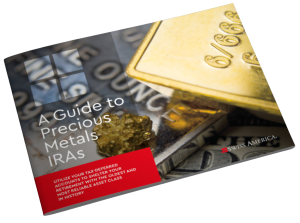“IRA” stands for Individual Retirement Account. It’s a government-backed way to save for retirement that comes with tax benefits. The whole purpose is to give people an incentive to increase their savings.
Types of IRAs
There are three options: a traditional IRA, a Roth IRA, and a SEP IRA. The main differences are:
Traditional IRA
You fund a traditional IRA with pre-tax money. For 2025, the IRS allows you to contribute $7,000 per year if you are under 50 and $8,000 if you are 50 and older. Your account grows tax-deferred until you’re ready to take distributions at retirement age of 59.5. Then, any funds you take out of your IRA get taxed at your current income level.
You can’t just leave the funds in the account forever. The IRS rules require you to start taking required minimum distributions (RMDs) at age 73.
Tax advantages include:
- Reduce income taxes in the short term.
- Tax deferral until you are potentially in a lower tax bracket.
- Traditional IRA contributions might be tax-deductible.
Roth IRA
With a Roth IRA, you contribute to the account with after-tax dollars. The same contribution limits apply as those for a traditional IRA. You can take out your initial contributions at any time since you’ve already paid taxes on them. Meanwhile, any gains on your investments grow tax-free, and you can pull out distributions after age 59.5 as long as you’ve held the account for over five years.
Since you’ve already paid taxes, the IRS doesn’t require minimum distributions with a Roth IRA, so you can keep the funds in your retirement savings account as long as you want. You can even pass on the net asset value to your heirs. Beneficiaries of inherited Roth IRAs have to take required minimum distributions, but the withdrawals are tax-free.
Tax advantages include:
- Grow investments tax-free.
- Pass investments on to heirs tax-free.
SEP IRA
If you’re self-employed or work for a small business, you can leverage a Simplified Employee Pension Individual Retirement Account (SEP IRA). This works like a traditional IRA.
Here’s a quick comparison table of these retirement savings accounts:
| Feature | Traditional IRA | Roth IRA | SEP IRA |
| Contribution source | Pre-tax dollars | After-tax dollars | Pre-tax dollars, funded by employer |
| Annual contribution limit | $7,000 if under 50, $8,000 if 50 or older | $7,000 if under 50, $8,000 if 50 or older | Up to 25% of compensation or $69,000 for 2024, whichever is lower |
| Tax treatment at contribution | May reduce taxable income; contributions might be tax-deductible | No tax deduction at contribution | Employer contributions are tax-deductible |
| Growth | Tax-deferred growth | Tax-free growth | Tax-deferred growth |
| Withdrawals after age 59.5 | Taxed at current income level | Tax-free if account open for at least five years | Taxed at current income level |
| Required minimum distributions (RMDs) | Must start at age 73 | None for owner; beneficiaries must take RMDs but withdrawals are tax-free | Must start at age 73 |
| Inheritance | Beneficiaries pay taxes on withdrawals | Beneficiaries take tax-free withdrawals | Beneficiaries pay taxes on withdrawals |
Self-directed IRAs
Most of the time, when you hear “IRA” it means a regular IRA that invests in traditional assets like stocks and bonds. But you can also use these retirement savings accounts to invest in alternative assets. This broadens your investment choices to things like:
- Precious metals
- Real estate
- Bitcoin
- Private equity
Gold IRA
If you decide to allocate a portion of your retirement savings to precious metals like gold and silver, it’s called a Gold or Precious Metals IRA. A few specific rules for these accounts are:
- You’ll work with a self-directed IRA custodian.
- The IRS has rules for which metals qualify.
- Your metals have to stay in a depository until you reach retirement age.
Other types of retirement accounts
You can have an IRA or a self-directed IRA as well as an employer-sponsored retirement plan like a 401(k), 403(b), or TSP. You can also roll over your employer-sponsored plan funds into an IRA once you leave the employer.
Final thoughts on an IRA
Using an IRA as an investment vehicle gives you tax benefits that can help grow your retirement savings. There are several options depending on your goals and overall plan, so it’s a good idea to talk with a tax or financial advisor.
If you’d like to learn more about diversifying with precious metals, the Swiss America team can help you understand how it works.
IRA: FAQs
Is IRA still active?
Yes. The IRS still allows investors to use an IRA to save for retirement and get immediate tax benefits.
Is it better to have a 401k or IRA?
You don’t have to choose. A 401(k) is an employer-sponsored plan, and an IRA is something you set up on your own. When you leave a job, you can also roll your 401(k) into an IRA or Gold IRA to keep everything in one place.
Can you withdraw from an IRA?
Yes, you can withdraw from an IRA, but there may be taxes or penalties if you take money out before retirement age of 59.5.
